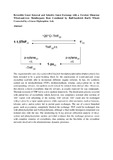Please use this identifier to cite or link to this item:
https://cris.library.msu.ac.zw//handle/11408/1868Full metadata record
| DC Field | Value | Language |
|---|---|---|
| dc.contributor.author | Bacchi, Alessia | - |
| dc.contributor.author | Bourne, Susan | - |
| dc.contributor.author | Cantoni, Giulia | - |
| dc.contributor.author | Cavallone, Silvia A. M. | - |
| dc.contributor.author | Mazza, Simona | - |
| dc.contributor.author | Mehlana, Gift | - |
| dc.contributor.author | Pelagatti, Paolo | - |
| dc.contributor.author | Righi, Lara | - |
| dc.date.accessioned | 2016-11-29T10:28:49Z | - |
| dc.date.available | 2016-11-29T10:28:49Z | - |
| dc.date.issued | 2015 | - |
| dc.identifier.uri | http://pubs.acs.org/doi/abs/10.1021/acs.cgd.5b00059 | - |
| dc.identifier.uri | http://hdl.handle.net/11408/1868 | - |
| dc.description.abstract | The organometallic unit {[(p-cymene)RuCl2]2[4,4′-bis(diphenylphosphino)biphenylene]} has been revealed to be a good building block for the construction of wheel-and-axle (waa) crystalline scaffolds able to incorporate different organic solvents. In fact, the synthesis carried out in tetrahydrofuran (THF), dichloromethane, toluene, and p-xylene led to the corresponding solvates. An apohost could instead be isolated from diethyl ether. However, this showed a lower crystallinity than the solvates, as usually expected for waa compounds. Thermal extrusion of THF led to a new apohost framework. The desolvation process occurred with partial loss of crystallinity which, however, was completely restored after sorption of THF vapors with rebuilding of the starting THF solvate. THF could also be exchanged with p-xylene by a vapor uptake process, while exposure to other aromatics, such as benzene, toluene, and o- and m-xylene led to partial guest exchanges. The use of a more branched guest, such as p-cymene, completely blocked the exchange. THF could be exchanged also with phenylacetylene and 4-ethynyltoluene, although a final stable host/guest compound was isolated only with the last. The monitoring by X-ray powder diffraction analysis of the p-xylene and phenylacetylene uptakes provided evidence that the exchange processes occur with complete retention of crystallinity, thus pointing out the flexibility of the crystalline networks involved in the aforementioned dynamic processes. | en_US |
| dc.language.iso | en | en_US |
| dc.publisher | American Chemical Society | en_US |
| dc.relation.ispartofseries | Crystal Growth Design;Vol. 15, No. 4; p. 1876-1888 | - |
| dc.subject | Organometallic unit, Reversible guest removal | en_US |
| dc.title | Reversible guest removal and selective guest exchange with a covalent dinuclear wheel-and-axle metallorganic host constituted by half-sandwich Ru(II) wheels connected by a linear diphosphine axle | en_US |
| dc.type | Article | en_US |
| item.fulltext | With Fulltext | - |
| item.languageiso639-1 | en | - |
| item.openairecristype | http://purl.org/coar/resource_type/c_18cf | - |
| item.grantfulltext | open | - |
| item.openairetype | Article | - |
| item.cerifentitytype | Publications | - |
| Appears in Collections: | Research Papers | |
Files in This Item:
| File | Description | Size | Format | |
|---|---|---|---|---|
| Reversible Guest Removal and Selective Guest Exchange with a Covalent Dinuclear Wheel.pdf | Abstract | 116.47 kB | Adobe PDF |  View/Open |
Page view(s)
156
checked on Oct 9, 2025
Download(s)
18
checked on Oct 9, 2025
Google ScholarTM
Check
Items in MSUIR are protected by copyright, with all rights reserved, unless otherwise indicated.



